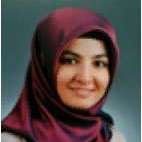International Journal of Education and Management Engineering (IJEME)
IJEME Vol. 10, No. 4, 8 Aug. 2020
Cover page and Table of Contents: PDF (size: 277KB)
Classification of Coronary Artery Disease Using Different Machine Learning Algorithms
Full Text (PDF, 277KB), PP.1-7
Views: 0 Downloads: 0
Author(s)
Index Terms
Coronary artery disease, classification, machine learning, MLP.
Abstract
Coronary Artery Disease (CAD) takes place in the category of fatal diseases resulting in death in our country and around the world. Each year about 340 thousand patients lost their lives due to CAD in Turkey. Early diagnosis is essential to reduce risk and prolong lifetime of these patients for diseases that require long-term treatment having death risk like CAD. For this reason, classification of CAD by using medical data processing and machine learning algorithms are important in order to develop assistive or expert systems for physicians. In this study, five different machine learning algorithms were applied to estimate whether patients in the Z-Alizadeh Sani data set extracted from the UCI machine learning pool are CAD. Accuracy, precision, recall, specificity and F1 score were compared as classification performance indicators to evaluate decision tree, random forest (RF), support vector machines (SVM), nearest neighborhood (k-NN) and multi-layer sensor (MLP) methods. According to the evaluation results, the MLP method gave high classification accuracy with 90%. It also appears that RF performs relatively better than other metrics. This results, show that these classification algorithms can be use for helping healthcare systems.
Cite This Paper
Bahar Nazlı, Yasemin Gültepe, Hayriye Altural. " Classification of Coronary Artery Disease Using Different Machine Learning Algorithms ", International Journal of Education and Management Engineering (IJEME), Vol.10, No.4, pp.1-7, 2020. DOI: 10.5815/ijeme.2020.04.01
Reference
[1]C. Padmavathi, V. S. Veenadev, “An Automated Detection of CAD Using the Method of Signal Decomposition and Non Linear Entropy Using Heart Signals,” International Journal of Image, Graphics and Signal Processing, 2019, 11(2), pp. 30–39.
[2]P. Harrington, “Machine Learning in Action”, 1st Edition, Manning Publications Shelter Island, NY, ISBN: 978-1-61729-018-3.
[3]J. Soni, U. Ansari, D. Sharma, S. Soni, “Predictive data mining for medical diagnosis: An overview of heart disease prediction”, International Journal of Computer Applications, 2011, 17 (8), pp. 43-48.
[4]M. L. Sharan, K. B. Sathees, “Analysis of cardiovascular heart disease prediction using data mining techniques”, International Journal of Modern Computer Science, 2016, 4 (1), pp. 55-58.
[5]K. R. Foster, R. Koprowski, J. D. Skufca, “Machine learning, medical diagnosis and biomedical engineering research-commentary”, Biomedical Engineering Online, 2014, 13 (1), p. 94.
[6]K. N. A. Halim, A. S. M. Jaya, A. Firdaus, “Data pre-processing algorithm for neural network binary classification model in bank tele-Marketing”, International Journal of Innovative Technology and Exploring Engineering, 2020, 9 (3), pp. 272-277.
[7]J. Huang, Y.-F. Li, M. Xie, “An empirical analysis of data preprocessing for machine learning-based software cost estimation”, Information and Software Technology, 2015, (67), pp. 108-127.
[8]J. Vamathevan, D. Clark, P. Czodrowski, I. Dunham, E. ferran, G. Lee, B. Li, A. Madabhushi, P. Shah, M. Spitzer, S. Zhao, “Applications of machine learning in drug discovery and development”, Nature Reviews Drug Discovery, 2019, 18 (6), pp. 463-477.
[9]UCI Machine Learning Repository, Z-Alizadeh Sani Data Set, 2017, [Online]. Available: https://archive.ics.uci.edu/ml/datasets/Z-Alizadeh+Sani.
[10]R. Alizadehsani et al., “Coronary artery disease detection using computational intelligence methods”, Knowledge-Based Systems, 2016, (109), pp. 187-197.
[11]A. D. Dolatabadi, S. E. Z. Khadem, B. M. Asl, “Automated diagnosis of coronary artery artery disease (CAD) patients using optimized SVM”, Computer Methods Programs in Biomedicine, 2017, (138), pp.117-126.
[12]Z. Arabasadi, R. Alizadehsani, M. Roshanzamir, H. Moosaei, A. A. Yarfard, “Computer aided decision making for heart disease detection using hybrid neural network-genetic algorithm”, Computer Methods Programs in Biomedicine, 2017, (141), pp. 19-26.
[13]D. Giri, U. R. Acharya, R. J. Martis, S. V. Sree, T.-C. Lim, T. Ahamed VI, J. S. Suri, “Automated diagnosis of coronary artery disease affected patients using LDA, PCA, ICA and Discrete Wavelet Transform”, Knowledge-Based Systems, 2013, (37), pp. 274-282.
[14]R. Alizadehsani et al., “A data mining approach for diagnosis for coronary artery disease”, Computer Methods and Programs in Biomedicine, 2013, 111 (1), pp. 52-61.
[15]D. Swarnava, B. Swagata, P. Arpan, A. Mukherjee, G. Utpal, M. Kayapanda, “CAD patient classification using MIMIC-II”, 2017, Institute for Computer Sciences, Social Informatics and Telecommunications Engineering, 2017, (181), pp. 370-375.
[16]J. Bektaş, “Use of mining techniques to determine presence of coronary artery disease and deriving a risk score by employing risk factors”, Doctoral Thesis, 2017, Çukurova University Institute of Natural and Applied Sciences, p. 101.
[17]Ş. Cihan, “Analyzing the risk of coronary artery disease using machine learning, Master Thesis, 2018, Kırıkkale University, Graduate of Computer Engineering, p. 111.
[18]S. G. K. Patro, K. K. Sahu, “Normalization: A preprocessing stage”, Computer Science, Published in ArXiv, 2015.
[19]T. Jayalaksmi, A. Santhakumaran, “Statistical normalization and back propagation for classification”, International journal of computer theory and engineering, 2011, 3 (1), pp. 1793-8201.
[20]Y. Y. Song, Y. Lu, “Decision tree methods: Applications for classification and prediction”, Shanghai Archives of Psychiatry, 2015, 27 (2), pp. 130-135.
[21]M. Belgeiu, L. Dragut, “Random forest in remote sensing: A review of applications and future directions”, ISPRS Journal of Photogrammetry and Remote Sensing, 2016, (114), pp. 24-31.
[22]V. N. Vapnik, “The nature of statistical learning theory”, New York: Springer-Verlang, 1995.
[23]V. Vijayalakshmi, K. Venkatachalapathy, “Comparison of Predicting Student‘s Performance using Machine Learning Algorithms”, I.J. Intelligent Systems and Applications, 2019, 11(12), pp. 34–45.
[24]Y. Wu, K. Ianakiev, V. Govindaraju, “Improved k-nearest neighbor classification”, Pattern Recognition, 2002, (35), pp. 2311-2318.
[25]E. O. O. Olaniyi, O. K. Oyedotun, K. Adnan “Heart diseases diagnosis using neural networks arbitration”, I.J. Intelligent Systems and Applications, 2015, 12, pp. 75-82.
[26]S. Shanmuganathan, “Artificial neural network modelling: An introduction”, Sentiment Analysis on Morphologically Rich Languages: An Artificial Neural Network (ANN) Approach, 2016, pp. 1-14.
[27]M. Sokolova, “A systematic analysis of performance measures for classification tasks”, Information Processing & Management, 2009, 45(4), pp. 427-437.
[28]M. Sokolova, G. Lapalme, “A systematic analysis of performance measures for classification tasks”, Information Processing and Management, 2009, 45, pp: 427-437.
[29]W. Wang, Z. Xu, “A heuristic training for support vector regression”, Neurocomputing, 2004, 61, pp. 259-275.


